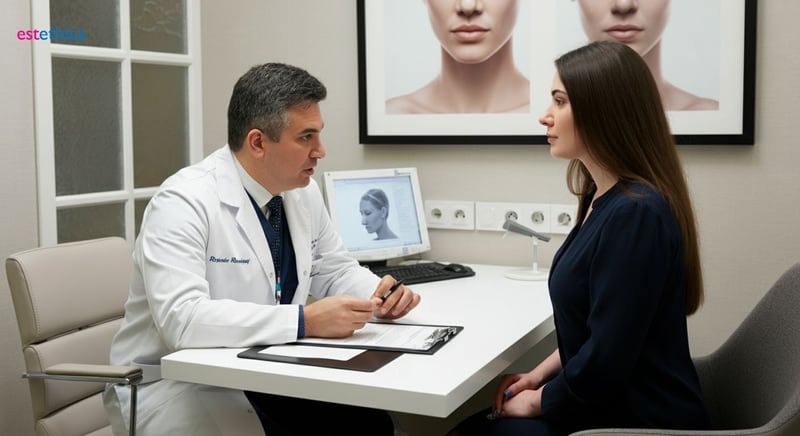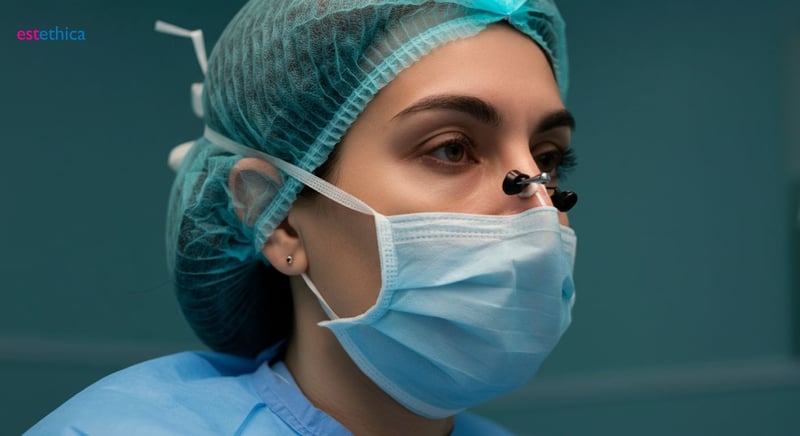Rhinoplasty: Reshape Your Confidence, Redefine You
Transform your look and confidence with rhinoplasty - a comprehensive approach to both aesthetic and functional nasal surgery.
Rhinoplasty, popularly known as a nose job, transcends the traditional realm of cosmetic surgery. This surgical procedure offers a unique opportunity to reshape not just your nose, but also your confidence and your perception of self. With the right expertise, rhinoplasty transforms not only the way you look but also enhances your self-assurance and overall quality of life. In this blog post, we delve deep into what rhinoplasty entails, its multifaceted benefits, and how it can redefine your life.
Understanding Rhinoplasty: More Than Just a Nose Job
The Dual Role of Rhinoplasty
Rhinoplasty, frequently called a nose job, is a surgical procedure that reshapes the nose to improve both its appearance and functionality. Historically, many viewed it primarily as a cosmetic solution. Today, modern techniques in facial plastic surgery allow surgeons to address a range of issues from aesthetic concerns to structural problems that may cause breathing difficulties. This evolution involves blending art and science to deliver results tailored to the patient's facial structure and needs.
For example, a patient might seek rhinoplasty not just to refine the shape of their nose but also to correct a deviated septum that impairs breathing. Nasal reconstruction enhances visual appeal and significantly improves the patient's quality of life by alleviating breathing issues. The integration of functional and aesthetic goals reflects a comprehensive approach to patient care in modern cosmetic alterations.
Benefits of Considering Rhinoplasty
- Improved Nasal Symmetry: Rhinoplasty can correct asymmetry to create facial balance.
- Enhanced Breathing: Addressing structural issues can lead to better respiratory function.
- Boosted Self-Esteem: Correcting perceived flaws can significantly improve confidence.
Factors Influencing Rhinoplasty Decisions
- Personal Aesthetics: A patient’s vision for their appearance guides the surgical plan.
- Functional Needs: Correcting structural issues like a deviated septum is vital.
- Surgeon Expertise: Choosing a skilled surgeon is paramount for optimal results.

Rhinoplasty Recovery: Tips for a Smooth and Speedy Healing Process
Essential Post-Operative Care for Optimal Healing
Recovering from rhinoplasty requires dedicated aftercare to ensure the best possible outcome. Proper care is crucial, and one must closely adhere to all post-operative directives provided by your surgeon. These guidelines are designed to minimize complications and support effective healing. The initial days post-surgery are particularly important, during which rest and diligent care can have a profound impact on the long-term success of your nose reshaping.
For instance, patients are often advised to sleep with their head elevated for the first few weeks to reduce swelling. Avoiding strenuous exercise helps prevent accidental trauma to the nose and reduces the risk of increased blood flow, which could impede healing. Furthermore, maintaining a soft food diet can minimize the need for excessive chewing, which might affect the healing nasal structures. Regular follow-up appointments allow the surgeon to monitor progress and promptly address any concerns. Nasal surgery aftercare is a marathon, not a sprint, and patience is key.
Key Steps for a Swift Rhinoplasty Recovery
- Elevate Head: Keep your head raised to minimize swelling and ease discomfort.
- Hydrate Well: Drink plenty of water to support faster healing and overall health.
- Attend Follow-Ups: Regularly scheduled visits ensure proper healing and early detection of issues.

Choosing the Best Rhinoplasty Surgeon: Key Qualities to Look For
Essential Qualities to Seek in a Rhinoplasty Surgeon
Selecting the right surgeon is paramount to achieving optimal rhinoplasty results. Prospective patients should seek a surgeon who is board-certified, possesses a strong track record in performing rhinoplasties, and is abreast with the latest surgical innovations. Additionally, the surgeon’s aesthetic sensibility, communication skills, and ability to tailor procedures to the patient's specific facial anatomy are crucial factors. A thorough consultation process, including reviewing before and after photos, helps ascertain the surgeon's capability and align expectations with potential outcomes.
For example, a surgeon might showcase expertise through specialized techniques aligning with ethnic rhinoplasty or revision cases, reflecting their nuanced understanding and skill in diverse patient needs. Excellent communication ensures that patients are well informed about the procedure, potential risks, and realistic outcomes. This transparency is vital for building trust and ensuring patient satisfaction. The ability to adapt surgical plans based on individual facial structures guarantees nose reshaping complements the patient’s overall appearance, enhancing natural beauty.
Steps to Evaluate Surgeon Qualifications
- Verify Board Certification: Confirm the surgeon is certified by a recognized board.
- Review Before & After Photos: Assess the surgeon's aesthetic results and consistency.
- Evaluate Communication: Ensure they clearly explain the procedure and potential outcomes.
Key Factors in Surgeon Selection
- Track Record: A history of successful rhinoplasty procedures is crucial.
- Aesthetic Sensibility: The surgeon's artistic vision should align with your goals.
- Customization Skills: The ability to tailor the procedure to your specific facial structure.

Beyond Aesthetics: Addressing Functional Issues with Nasal Surgery
Correcting Functional Impairments Through Rhinoplasty
While rhinoplasty is well-recognized for its cosmetic benefits, its role in correcting functional nasal issues is equally important. Many individuals suffer from conditions such as a deviated septum, nasal valve collapse, or enlarged turbinates, which can significantly impair their ability to breathe properly. Addressing these issues through surgical intervention not only improves nasal airflow but can also alleviate related health problems.
Nose reshaping to fix breathing obstructions leads to better sleep, reduces snoring, and enhances exercise tolerance since the body receives more oxygen. Consider a patient with a long history of sinus infections due to a severely deviated septum; corrective nasal surgery can dramatically decrease the frequency and severity of these infections, improving their overall health and quality of life. At estethica Global, our surgeons prioritize both the aesthetic and functional aspects of rhinoplasty, and we provide the best service for nose reshaping.
Benefits of Functional Rhinoplasty
- Improved Breathing: Corrects structural abnormalities to facilitate better airflow.
- Reduced Sinus Infections: Alleviates chronic sinus issues by improving nasal drainage.
- Enhanced Sleep Quality: Minimizes sleep disturbances caused by nasal obstruction.
Conditions Corrected with Rhinoplasty
- Deviated Septum: Straightens the nasal septum to improve airflow.
- Nasal Valve Collapse: Reinforces the nasal valve to prevent obstruction during breathing.
- Turbinate Hypertrophy: Reduces enlarged turbinates to enhance nasal passage width.
Rhinoplasty: Everything You Need to Know
Pioneering Nasal Reconstruction with Advanced Surgical Techniques for Enhanced Functionality and Aesthetics
Meticulous Post-Operative Care Ensuring Swift Rhinoplasty Recovery and Patient Satisfaction
Frequently Asked Questions
What is rhinoplasty and what does it address?
How can rhinoplasty improve breathing issues?
What are some important rhinoplasty recovery tips to ensure a speedy healing process?
What qualities should I look for in a rhinoplasty surgeon near me?
Ready for a healthier and more beautiful you? Discover personalized aesthetic and healthcare solutions at estethica.
📞 Get Your Free Consultation!